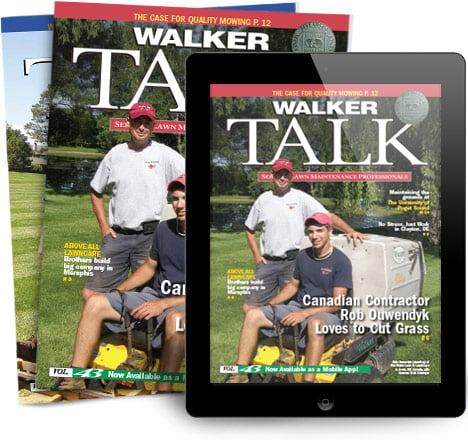Asked to name one of the most challenging aspects of their job, and most lawn maintenance contractors will define it in one word, bidding.
Ironically, the hard work that goes into the bidding process is often negated by a simple lack of attention to detail in the presentation itself All too many sound bids fail because they don't include all of the information requested, or because they fail to present the information in an attractive and professional manner. To lose because your bid was too high is forgivable. But to lose because you didn't go far enough with the facts or because the presentation just didn't look professional is not.
So what comprises an effective and attractive bid? Many things, and bid packages vary depending on the prospective client.
For Commercial Accounts
An axiom when bidding on any commercial property is to respond completely and fully to all specifications in a bid request.
Be as accurate as possible on your pricing. Avoid making big promises, especially those you can't keep. Prove to prospective clients that you can do the tough or specialty assignments. Do this by referencing a job where you have completed a similar service. Send a photo, if needed. And remember never to hide any prices. It is almost as painful to explain your mistake as it is to eat the cost. Worse, you may have to do both.
In addition to the bid proposal, all commercial bid packages should include four major elements:
- References. Choose your best, high visibility accounts and include quality photos.
- Complete list of equipment. Let people know what you will be carrying/riding on their property.
- All certificates and licenses. Include insurance certificates, workers' compensation, and all required licenses.
- Cover letter. A concise and strongly written cover letter can really make or break a bid. In the letter, provide a brief history of your company, including your business philosophy, years in business and types of properties you maintain.
Each bid should be cleanly typed and presented. When property managers/owners see you turn in a tattered proposal, they will assume you may do the same on their lawn.
A folder, with your company name and logo on the front, is an ideal way to present a bid. Place the cover sheet on top, followed by the specifications (pricing) section on the right side of the folder. This is the first place people look. Use the left side for additional information. Include a business card, or better yet, a magnetized business card. Who ever throws a magnet away?
For sealed bids, simply place the folder in a large envelope.
For Residential Accounts
The bidding process is similar for residential accounts, with two major exceptions. The shear number of bids will be greater and there is more personal contact upfront during the bidding process. Both are key considerations.
To save time and money, your proposal packet needs to be easier and less expensive to produce for residential accounts. Forget the envelope, but the folder may still be in order. Once again, include all requested information and all relevant information about your company. Just as you would with commercial accounts, include:
- References. A list of three references should be enough here.
- List equipment. As with commercial accounts, inform people about the type of equipment you'll be using on their properties.
- All certificates. Even residential customers want to know if you're insured, so they know they're protected.
- Cover letter. An introductory letter about your firm is important for residential customers, too.
Interactive Estimating
Unlike most commercial bids, preparing a bid for a residential account may actually involve walking the property with the homeowner. Be prepared to answer the tough questions right on the spot. Know your costs and be able to apply them with your regular mark-up. And be ready to take into account obstructions (trees, children's toys, swing sets, even dogs). Multiply the number of times you would mow each year by the number of obstacles. This is an additional expense for you.
For both residential and commercial accounts, your personal appearance when you present the bid is just as important as the content of the bid and the way it is packaged.
Proper attire in both instances should be driven by the customer and not by your company. Larger commercial accounts may warrant a jacket and tie. For other smaller accounts, a dress shirt and slacks, with a tie as an option, may be more appropriate. Homeowners might be more receptive to a collared shirt and khaki pants.




 Site Search
Site Search



